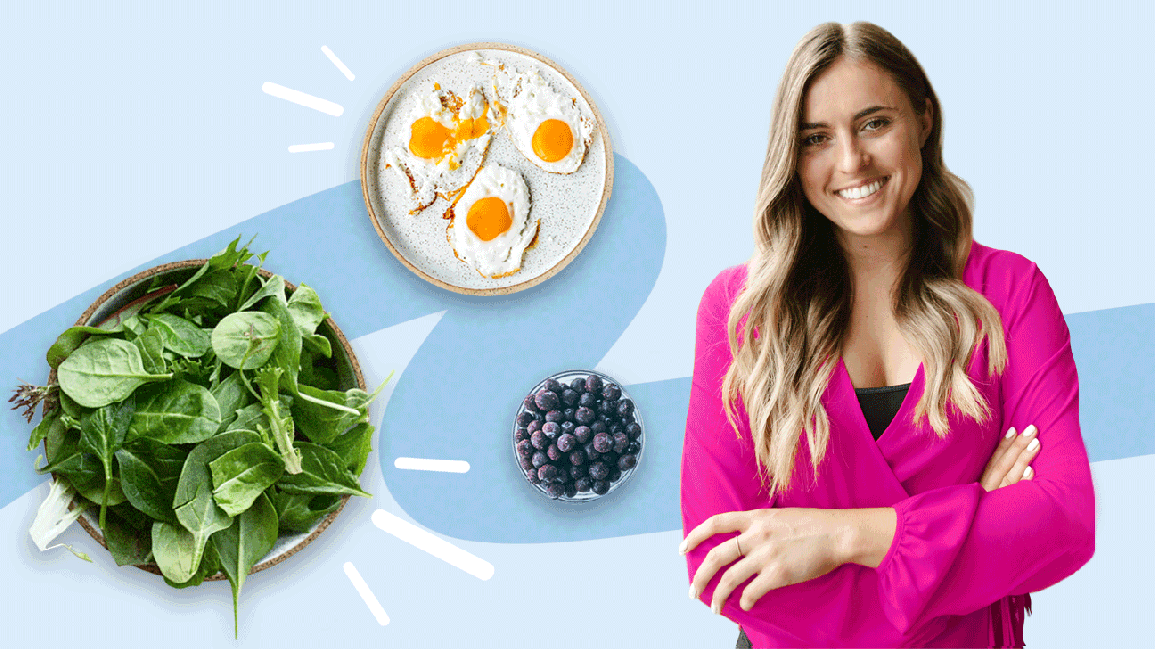After that heart-pounding HIIT session, refuel with high-protein, antioxidant-rich foods.
I’m always down for a good, sweaty workout, especially one that’ll burn a lot of calories and work up a sweat in a short amount of time. And one of the most popular fitness trends for two years running ticks both of these boxes.
Enter high-intensity interval training (HIIT).
Studies show that HIIT — short bursts of high-intensity exercise followed by short rest periods — has been linked to weight loss, an increase in both aerobic and anaerobic fitness, and strengthening of muscles.
It’s also ideal for those short on time.
Yet if you’re adding HIIT to your routine to help you reach your fitness goals, it’s important that you pair it with the right nutrition. Refueling your body post-workout with the right types of foods aids in muscle repair and growth and can help to replace any energy that was lost during your workout.
You should look to refuel your body no later than 60 to 90 minutes after your HIIT workout. This provides your muscles with what they need to replenish their glycogen stores adequately.
So, if 2019 is the year that you give HIIT a try, make sure that you’re also choosing the right nutrients after your workout. To get you started, you can check out my top five foods suggestions below.
Eggs are one of the best — and my personal favorite — foods after a workout. They’re a powerhouse of nutrition, with a significant amount of protein and healthy fats — around 7 grams and 5 grams respectively per egg.
Eggs are also considered a “complete protein” source. This means that they contain all nine of the essential amino acids, which have been linked to aiding in muscle recovery. Eggs also contain B vitamins, which can aid in energy production.
I love utilizing eggs for protein. They’re delicious, easy to make, and can be prepared in a variety of different ways. One of my favorite recipes is my avocado egg salad. Add hard-boiled eggs to avocado, spicy brown mustard, dill pickles, and salt and pepper. Enjoy it on a piece of toast.
Other ideas for incorporating eggs into your post-workout snack include:
- on a salad with tuna and spinach
- scrambled with peppers and mushrooms
- hard-boiled with a pinch of salt and pepper
Blueberries are both delicious and packed with dietary fiber, vitamins, protein, and antioxidants.
All forms of exercise cause some type of oxidative stress, or an imbalance between free radicals and antioxidants in your body. For this reason, it’s important to include antioxidant-rich foods in your everyday diet.
What’s more, eating blueberries after a workout has been linked to accelerated muscle recovery time.
They can also be incorporated into your diet a number of different ways.
I personally eat blueberries on a regular basis and I tend to throw a handful or two in my post-training smoothie.
Other ways to include these in your post-workout snack include:
- paired with coconut yogurt
- topping for oats
- enjoyed on their own
I’m a sucker for a good avocado. This wonderous fruit is rich in magnesium, which is excellent for muscle recovery. It also contains 14 percent of your daily value of potassium, which can help to regulate fluid balance and controlling electrical activity of the heart and other muscles.
What’s more, avocado is a great source of folate and vitamins C, K, and B-6, all of which are anti-inflammatory nutrients, which can help reduce inflammation in the body that may be caused by exercise-induced stress.
In short, this fruit is a great way to aid in HIIT recovery.
For me, I make sure to include it in one to two of my meals per day and I find that one-third of an avocado is a sufficient serving size. Here are a number of ways to enjoy avocados:
- paired with eggs
- mashed on toast
- added to a power bowl
- thrown into a smoothie
- on its own with a little bit of salt and fresh ground pepper
Much like blueberries, green leafy vegetables are part of my go-to post-workout food. They’re chock-full of vitamins, minerals, and fiber. They’re also low in calories.
These types of vegetables are also high in antioxidants and can help to minimize the free radicals that may be released during HIIT training.
There’s a large variety of leafy green vegetables to choose from, but some of the more popular ones include:
- kale
- spinach
- arugula
- watercress
Like I do with blueberries, I always throw some frozen spinach into my post-workout smoothies — about two big handfuls. It tends to blend easier when frozen, meaning you won’t be able to taste it, not to mention it makes your smoothie extra cold!
You can also eat leafy greens the following ways:
- sautéed with extra virgin olive oil as a side dish
- thrown into a salad
- added to a pasta dish along with lean protein
Making sure your body is getting enough whole-food protein to help the muscle recovery process isn’t always easy or possible. In this case, I suggest looking to a high-quality protein powder, which can help support the body when muscle breakdown occurs during strength training or HIIT exercises.
Another positive when it comes to protein powder is the convenience factor. It’s a great grab-and-go option for those short on time, not to mention it keeps you fuller for longer.
While I tend to opt for sprouted vegan protein powders in part due to my intolerance to lactose, there are a number of types out there to try. As a tip, I try to keep the sugar content below 6 to 8 grams per serving.
Refueling your body with nutritious, whole foods after HIIT is essential to performance as well as recovery. Add one — or all! — of these foods to your post-workout snack to help with muscle recovery, protein synthesis, and ultimately, aid in your ability achieve your workout goals.
Rachael DeVaux is a registered dietitian and certified personal trainer based in Seattle. Her focus is on providing nourishing recipes, nutrition tips and tricks, as well as killer workout ideas. Rachael’s goal is to provide people with the tools they need in order to build healthy habits and ultimately live a balanced lifestyle. You can find Rachael on her blog, or on Instagram, Facebook, Twitter, and Pinterest.




